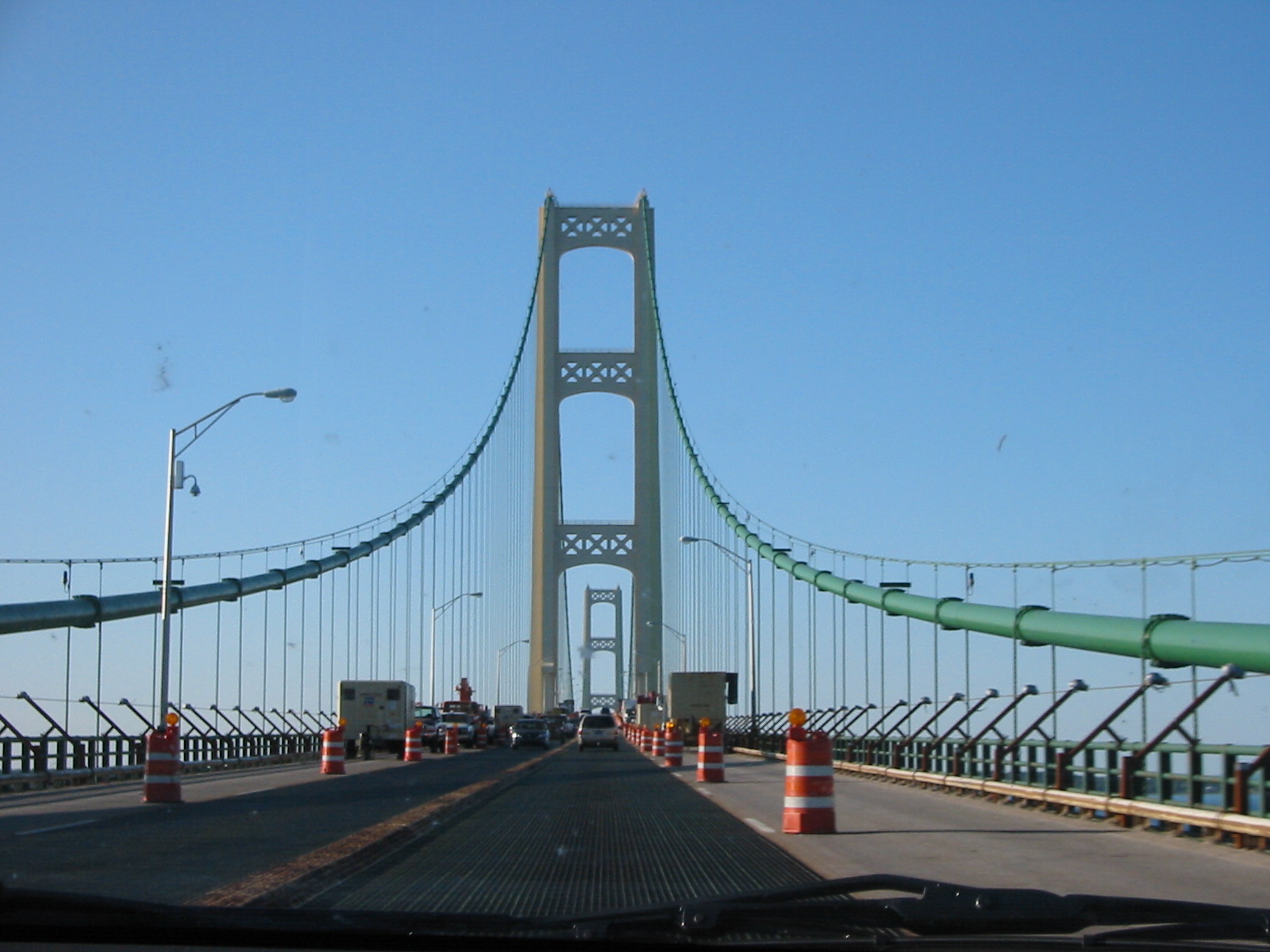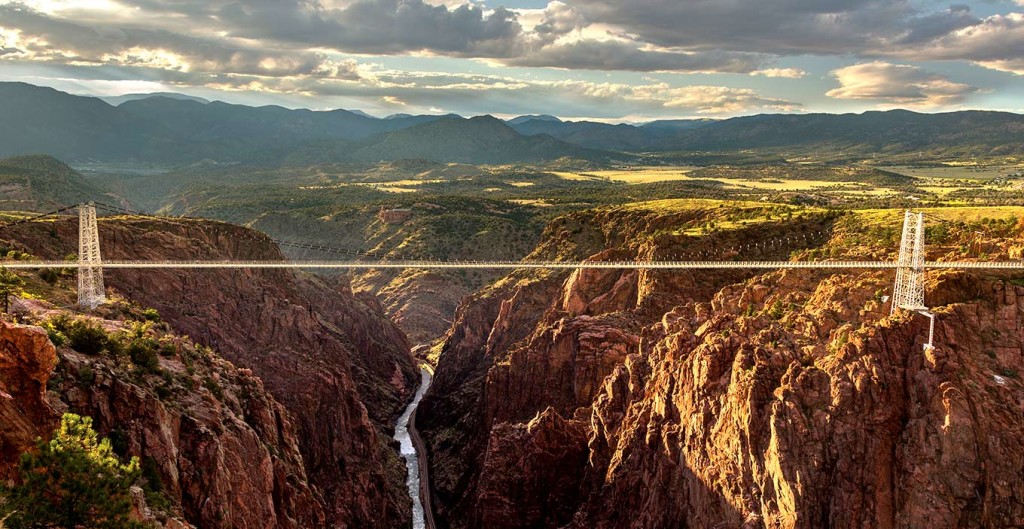The Great Eight: Incredible Bridges To Drive Across That Aren't In San Francisco

There’s something about driving across a bridge. Maybe it’s that it breaks up the monotony of the drive, maybe it’s the humbling sense that comes with beauty and mastery of engineering, or maybe it’s the little voice screaming inside your head that you’re about to drop 200 feet into a lake.
If you feel the same, you’ve got to take a trip to these eight great American bridges. Some you’ll visit for their daunting size, others for the fascinating history involved in their building. And no, none of them are named Golden Gate, Brooklyn, or George Washington.

The West Cornwall Covered Bridge can trace its history to pre-American Revolution. What else would you expect from the most famous bridge in Connecticut? The current bridge has stood since in 1864, though historians believe there were other bridges standing at this crossing as early as 1762. These wooden bridges typically had a lifespan of eight to ten years before they were damaged too much by floods and wear, before its components would be reused to build the new ones. The current West Cornwall Covered Bridge uses the central pier of the previous incarnation, which was completed in 1841.
Over the years the bridge has seen its share of threats. In 1961 a severe ice storm caused a jam that could have destroyed the bridge, hurricanes and floods occasionally attempt to wash it away, and in 1945 a 20 ton oil truck fell right through the floor, but the bridge is always repaired. After all, it’s one of only three of it’s kind left in the state.

Building the Mackinac Bridge connecting Michigan’s Upper and Lower peninsulae was a daunting task for engineers. The notion of a bridge was popular as far back as the early 1800’s, but between the length of the gap, the depth of the great lakes, and the severity of the climate, it took until 1884, shortly after the completion of the Brooklyn Bridge, for engineers and architects to propose a solution. Four years later Cornelius Vanderbilt II proposed a design during a meeting at Mackinac Island’s famous Grand Hotel, but it took several decades, until 1928, for the governor to even order a study that looked into building a bridge.
A concrete causeway was begun in 1936, but engineers hit a snag – massive icebergs from the Great Lakes placed stress on the structure. As if they needed more challenges, World War II broke out, and securing funding became impossible. Finally in 1950 the state legislature created the Mackinac Bridge Authority, which began hiring engineers to work out the project. By this time ferry services were so overtaxed traffic could back up for as many as 16 miles and people waited up to five hours for their turn to cross the straits.

Funding was finally secured in 1952, though a weak bond year delayed the release of the funding until the end of 1953. Final construction began the next year, and engineers gave themselves an estimated completion date in 1956. For once, the bridge had some luck and construction proceeded apace. The bridge was opened to the public in 1957, at a cost of $100 million and unfortunately, the lives of five workers.
The five mile bridge is impressive, and a little daunting to drive across. The open steel grating on the interior lane will give those with either acrophobia or gephyrophobia more than a bit of nerves. For those who are uncomfortable driving, the Michigan Department of Transportation offers a Drivers Assistance Program to get you across.

The Royal Gorge Bridge in Cañon City, Colorado is a nice piece of engineering. It spans 1,260 feet and at 955 feet above the Arkansas River it’s the highest bridge in the United States. But that’s not why we’re talking about the Royal Gorge Bridge. We’re talking about it because Colorado turned this beautiful bridge into a theme park.
Zipline, ride roller coasters, attend concerts and shows, take gondola rides, this park turns the bridge into the destination.

There’s only one place in the world you could run a full marathon while only seeing two miles of actual ground. The Lake Pontchartrain Causeway is a bridge that runs 24 miles across Lake Pontchartrain, connecting Mandeville Louisiana with the Crescent City of New Orleans. That makes it the longest bridge over continuous water in the world.
Connecting the north and south sides of the lake was an old idea. Ferry services date back to the 19th century, and in the 1920’s they were tossing around the idea of creating artificial islands to make the crossing easier. It wasn’t until nearly 1950 that someone had the guts to propose a single bridge spanning the entire lake. The original two lane causeway was completed in 1956 and a parallel two lane causeway was built in 1969 to handle the increase in traffic. Storms and water have damaged parts of the span, but even Hurricane Katrina failed to damage the structural foundation.

Yes, we are talking about that London Bridge. The bridge was originally built in 1830 over the River Thames in London, but in 1967, American entrepreneur Robert P. McCulloch went on what must a been a pretty expensive European shopping trip. McCulloch had the granite exterior disassembled and numbered piece by piece, shipped to the United States, and reassembled in Lake Havasu City, Arizona. After importing and assembling the bridge, McCulloch had a channel dredged underneath, causing water to flow, and creating an island to connect the bridge to. But… why?
Well, McCulloch had a problem. His planned community of Lake Havasu City was having difficulty attracting new residents and businesses. Hot, arid climates and long distances from other cities made it a very undesirable destination. With the addition of the bridge, McCulloch turned the city into a tourist destination and a booming retirement community virtually overnight.

If you need a reason to take the road less traveled, next time you’re around Arkansas take a detour along highway 187 northwest of Eureka Springs to Beaver, a town with less than 100 residents. There you’ll find Arkansas’ last remaining suspension bridge, sometimes called the “Little Golden Gate.” The beautiful suspension bridge is small, just 554 feet long and only 11 feet wide. Traffic can only travel one way across the span, but in a town so small and off the beaten path, that’s not too much hassle.
Pigtail Bridges

This series of winding bridges runs from Custer State Park to the entrance of Mount Rushmore National Memorial. The wooden bridges and tunnels frame Mount Rushmore as you make the 17 mile climb on Iron Mountain Road. This is truly one of the most unique and beautiful bridge drives in the country, enhancing the majesty of an already pretty unbelievable monument.

In the late 1800’s, Duluth Minnesota had a problem. They had just completed the Duluth Ship Canal, bringing commerce and tourism to northern Minnesota. But unfortunately they didn’t account for how people who lived on the newly created island of Minnesota Point would get into town. They tried ferries, but the Minnesota winter put an end to that quickly. They built a swinging footbridge, but residents didn’t love risking their lives to walk to and from work.
Finally in 1905, they completed the gondola portion of the Aerial Bridge, which sat high over the canal. The gondola could carry 350 people plus wagons and cars, and only took one minute to raise, cross, and lower. By the late 1920’s, an increase in tourism and population on Minnesota Point meant the gondola could no longer keep up with demand, and engineers went back to work.
They didn’t want to rebuild the whole structure, so they built their bridge into it. When tall ships approach, the bridge uses a system of counterweights to raise 135 feet into the air. The whole thing takes about a minute, and happens 5,000 times per year. As you can see below, it’s a pretty noisy process, which might be why there aren’t more bridges like this. The Aerial Lift Bridge in Duluth is one of only seven of its kind in the whole country.



